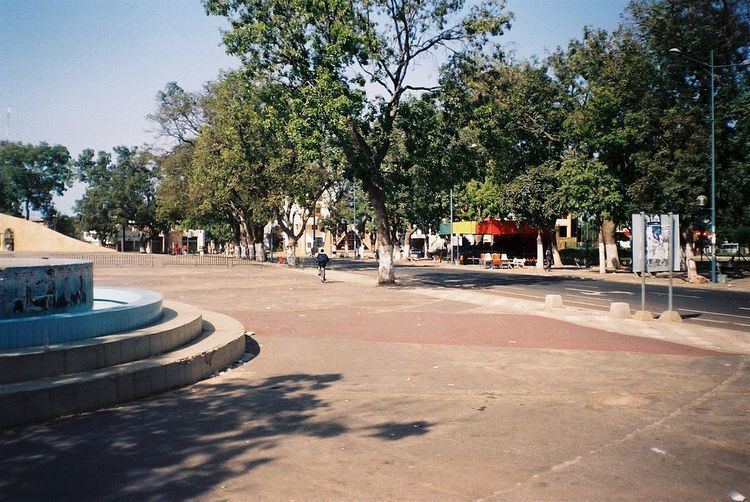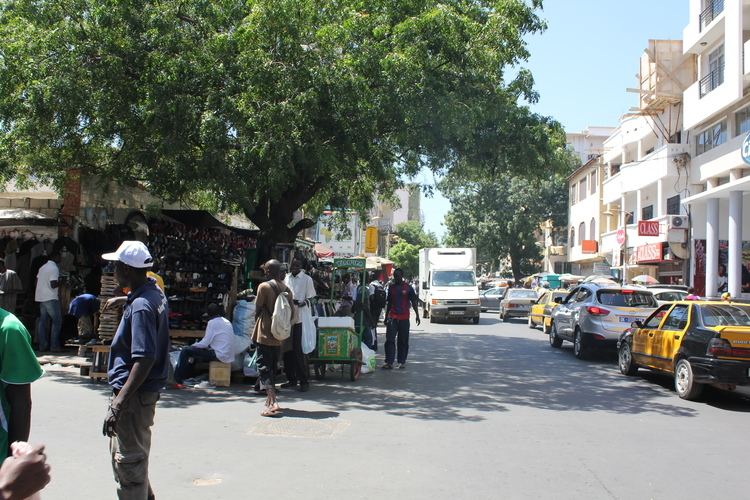Country Senegal | Region Thies Region | |
 | ||
Un bijou face au restaurant les delices a thies au senegal
Thiès (pronounced chess in Noon language, [/tjɛs/]) is the third largest city in Senegal with a population officially estimated at 1,788,864 in 2013. It lies 72 km east of Dakar on the N2 road and at the junction of railway lines to Dakar, Bamako and St-Louis. It is the capital of Thiès Region and is a major industrial city.
Contents
- Un bijou face au restaurant les delices a thies au senegal
- Map of This
- Senegal focus sur l ecole polytechnique de thies
- History
- Transport
- Economy
- Education
- Twin towns Sister cities
- References
Map of Thiès
Senegal focus sur l ecole polytechnique de thies
History

Before colonization, the Thiès Plateau was a wooded frontier between the kingdoms of Cayor and Baol inhabited by the Serer-Noon, an ethnic sub-group of the Serer people. The Serer-Noon still inhabit the Thiès-Noon neighborhood of the south-west city today. They speak the Noon language, one of the Cangin languages.

The plateau acquired strategic importance when the French embarked upon an expansionist colonial policy. A military post was created in 1864 and the military have marked the city’s development ever since; it is home to a major military base.
Transport

At first a simple rail stop, or "escale", on the Dakar-Saint Louis line (completed in 1885) Thiès became a rail junction with the Dakar-Niger line (built 1906-1923). The national network of paved roads created after World War II likewise converged on Thiès (the N3 road joins the N2 road in the town), which thus commands nearly all access to the Cap-Vert Peninsula (Dakar and Rufisque).
The railways brought commercial development and migrant laborers, including Bambara from eastern regions of Senegal and from Mali. The rail workers of Thiès played a key role in the immergence of Senegal’s labor movement. Their strikes in 1937 and again in 1947-48 also marked the development of the independence movement across French West Africa.
Economy
Thiès is best known for its tapestry-making industry, an exclusive factory having been set up in 1966, producing work designed by Senegal’s top artists. The famous Birds of Paradise tapestry was manufactured in Thiès. The city also contains a polytechnic school, the University of Thiès.
As the transportation hub of a productive agricultural hinterland: rice, peanuts, manioc, millet, and fruit, the city is a leading livestock-trading and meat-packing center. It has rail yards and repair shops, and alumina phosphate deposits are worked at nearby Palo Dial and Taïba.
Today, Thiès is developing increasingly as an extension of the congested Cap-Vert Peninsula. It is attracting industrial investments (electrical and mechanical engineering) and there are plans to link it to Dakar by highway and commuter train.
Other attractions in Thiès include a museum, an artisanal and crafts village and a few remains of old fortifications.
Education
École Française Docteur René Guillet, a French international school, is located in Thiès.
Malick Sy high school is the largest school in the city and one of the biggest of Senegal. Many Senegalese politicians were trained in this school which also produced many laureates of the Senegalese General Contest.
Twin towns – Sister cities
Thiès is twinned with:
